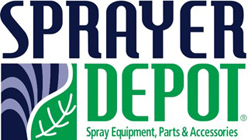 Imagine you’re applying pesticides using a backpack sprayer. Or, just the same, you’re spraying from a truck using a tank, pump and hose to apply chemicals. Maybe you’re using a boom setup. For that matter, you could even be piloting an airplane and in each situation the definition of spray drift is the same.
Imagine you’re applying pesticides using a backpack sprayer. Or, just the same, you’re spraying from a truck using a tank, pump and hose to apply chemicals. Maybe you’re using a boom setup. For that matter, you could even be piloting an airplane and in each situation the definition of spray drift is the same.
According to the United States Environmental Protection Agency: “pesticide drift is the movement of pesticide dust or droplets through the air at the time of application or soon after, to any site other than the area intended.”
We’re all aware of those two dreaded words: Spray Drift. While the repercussions of it vary for each industry and application type, the definition and solutions to manage spray drift are similar. In many of these scenarios above the issue with spray drift can lead to spotty pest control, wasted chemicals, off-target damage, water and air quality issues and higher costs. That last one really hurts. As the public becomes more aware of pesticide concerns, and regulators are quick to slap fines, spray drift management from that standpoint is vital to our livelihood.
Much like you take precautions to protect yourself with your work attire by making sure to wear proper clothing, eye protection and closed-toe shoes, you should also consider these five steps to manage spray drift from Sprayer Depot.
- Avoid spraying when weather conditions are unfavorable. I know, I know. You’ve heard this time and time again that weather affects spray drift. It’s true though and often times we get so caught up in our day-to-day that we ignore this important factor. Think about the day’s conditions as it relates to wind, temperature and humidity, air stability, etc. Know your product labels well and understand these requirements, even for wind velocity. Make adjustments accordingly. It may, even on the extreme end, require you to reschedule that day’s work. Also think about how droplet size factors into the weather issue. Large droplets are less likely to drift in general because they fall more quickly, evaporate more slowly and are less affected by the wind given their size. We like that.
- Consider using buffer zones. This aspect is becoming more important given label requirements these days. These "no spray zones" serve as a barrier to protect sensitive areas and vary greatly for each landscape, equipment and application type. Design of a buffer area depends on variables like spray method, wind, chemical type and the type of sensitive area that you’re trying to avoid. In general there is not a one-size-fits-all rule.
- Try new technologies like drift reduction nozzles. We recently spoke to Mark Techler with Hypro & SHURflo Ag and Industrial Pumps and Accessories in a recent blog post about drift control spray tips. He explained that these drift control spray tips “use air induction to produce air filled droplets, which dramatically reduce drift compared to conventional tips.” He went on to share the benefits of this new tech and offered up the Hypro SprayIT Calculator as a resource the next time your considering one of these new parts.
- Lower spray (boom) heights. It makes sense. The higher the boom, and thus the spray nozzle, are above the target, the more likely that wind will move droplets away from the intended area. Your nozzle label will offer a recommendation on nozzle height, which can serve as a good starting point to adjust the boom height. However, often those recommendations for nozzle height are much higher than optimum on large application equipment traveling at higher speeds. Of course, you want to ensure the boom isn’t too low, which can create uneven patterns. A 1:1 boom height has generally been the standard, but some recommend getting a tad closer so we recommend using the manufacturer recommendation as a starting point and working down from there – take into account your unique landscape and spray mechanics.
- Use lower pressures. In general, the concept that we’ve all heard is to use lower pressures, which result in larger droplets. However, in today’s application world this method might need some adjusting given the new technologies with drift control spray nozzles. With the design of some drift control spray nozzles that introduce air induction, these tips will create a drop in pressure while still producing larger droplets.
Your actions can affect spray drift. After all, you CAN control the equipment you use and the field conditions you spray. So while you may not have control over the weather or even the neighboring property, you can be empowered by these 5 easy steps to manage spray drift and you have the opportunity to educate your team, too.

.png?width=280&name=SameDayShippingGuarantee-New%20(1).png)



